Thăng Long Imperial Citadel in Hanoi, Vietnam
Compared to the famous Huế Imperial Citadel built in the Nguyễn Dynasty (1802-1945), Thăng Long Imperial Citadel, which was constructed in 1011, is much less hyped by travelers. Due to plenty of wars spanning from the French colonial rule to the Japanese occupation to the Vietnam War, the citadel went through major destruction and renovations.
For this reason, you’ll see only a very limited number of imperial structures boasting Vietnamese vernacular elements at the citadel. However, if you’re keen to know more about Vietnam’s architecture and arts in the form of ruins and relics dating back to more than 1,000 years ago, this place won’t disappoint.
History of Thăng Long Imperial Citadel
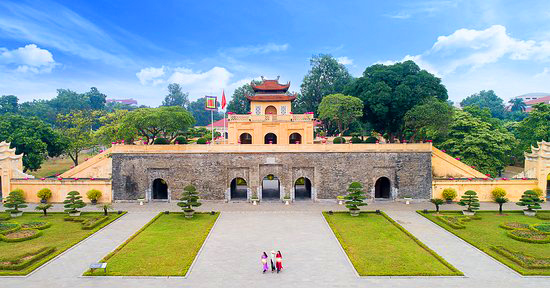
Image credit: TripAdvisor
First constructed in 1011 under the reign of Emperor Lý Thái Tổ, Thăng Long Imperial Citadel features a spacious complex of structures and museums that spans 18,395 hectares.

This citadel was the imperial capital of Vietnam for over 700 years until the Nguyễn Dynasty moved the capital to Huế in 1810. After continuous wars throughout the 19th and 20th century, the citadel was nearly destroyed.

Today, visitors to Thăng Long Imperial Citadel can still visit the remaining structures of the ancient city and museums where ancient artifacts excavated from the former kingdom are displayed.
 The building where you can buy an entrance ticket
The building where you can buy an entrance ticket
On 31st July 2010, the central part of Thăng Long Imperial Citadel was listed as a UNESCO World Heritage Site.
– Places to visit inside the complex –
Đoan Môn Gate – the entrance to the citadel since 1121
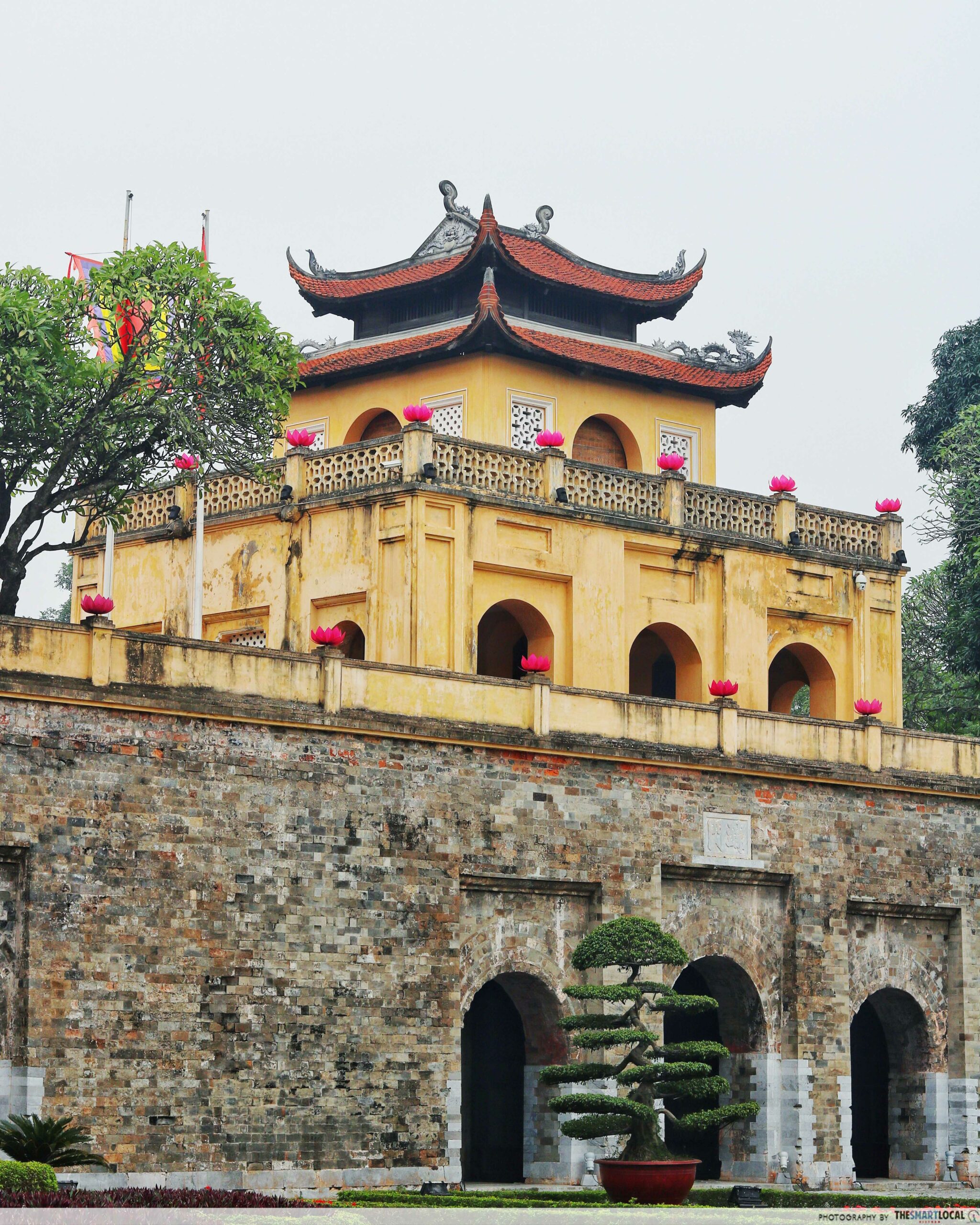
Situated to the south of King Thien Palace, Đoan Môn Gate is one of the 5 remaining structures on the grounds of Thăng Long Imperial Citadel that have been around since 1121.
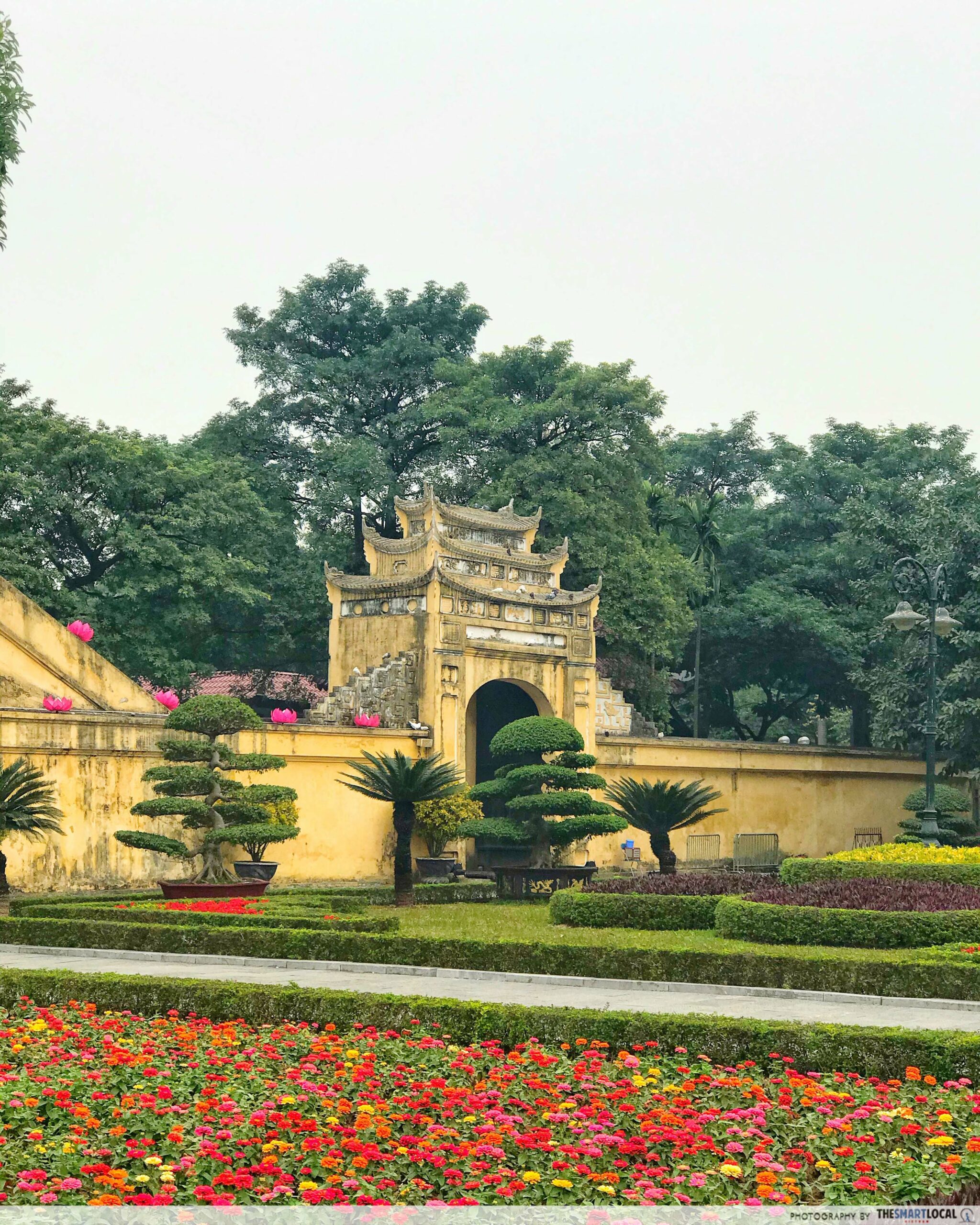 Two of the gates were built in the Vietnamese vernacular style, featuring 3-tiered roofs.
Two of the gates were built in the Vietnamese vernacular style, featuring 3-tiered roofs.
Consisting of five stone arched gates, Đoan Môn Gate was formerly used as the entrances for the royal family and mandarins.

At the top of the middle gate, you’ll find a stone signage with an inscription that spells “Đoan Môn”, or 端門, in Sino-Vietnamese characters. This inscription is believed to trace back to the Lý Dynasty (1009-1225).
Walking through one of the gates, you’ll see a staircase leading to the upper deck.

From the upper deck, which is decked out with many archways and yellow lanterns, you’ll enjoy a widespread view of the entire citadel ground, as well as the iconic Flag Tower of Hanoi.
Kính Thiên Hall – the central part of the citadel
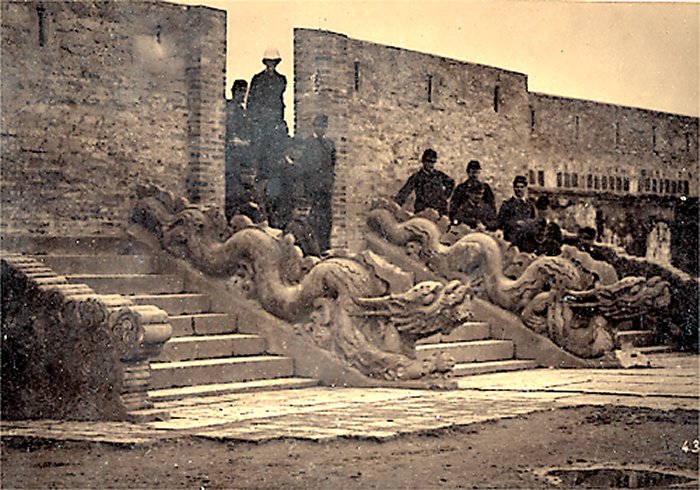
Kính Thiên Hall in 1886 during the French occupation
Image credit: Wikipedia
Constructed in 1428 during the reign of Emperor Lê Thái Tổ, Kính Thiên Hall was completed during the reign of Emperor Lê Thánh Tông (1442-1497). This is where Emperor Lê Thái Tổ’s coronation also took place in 1428.
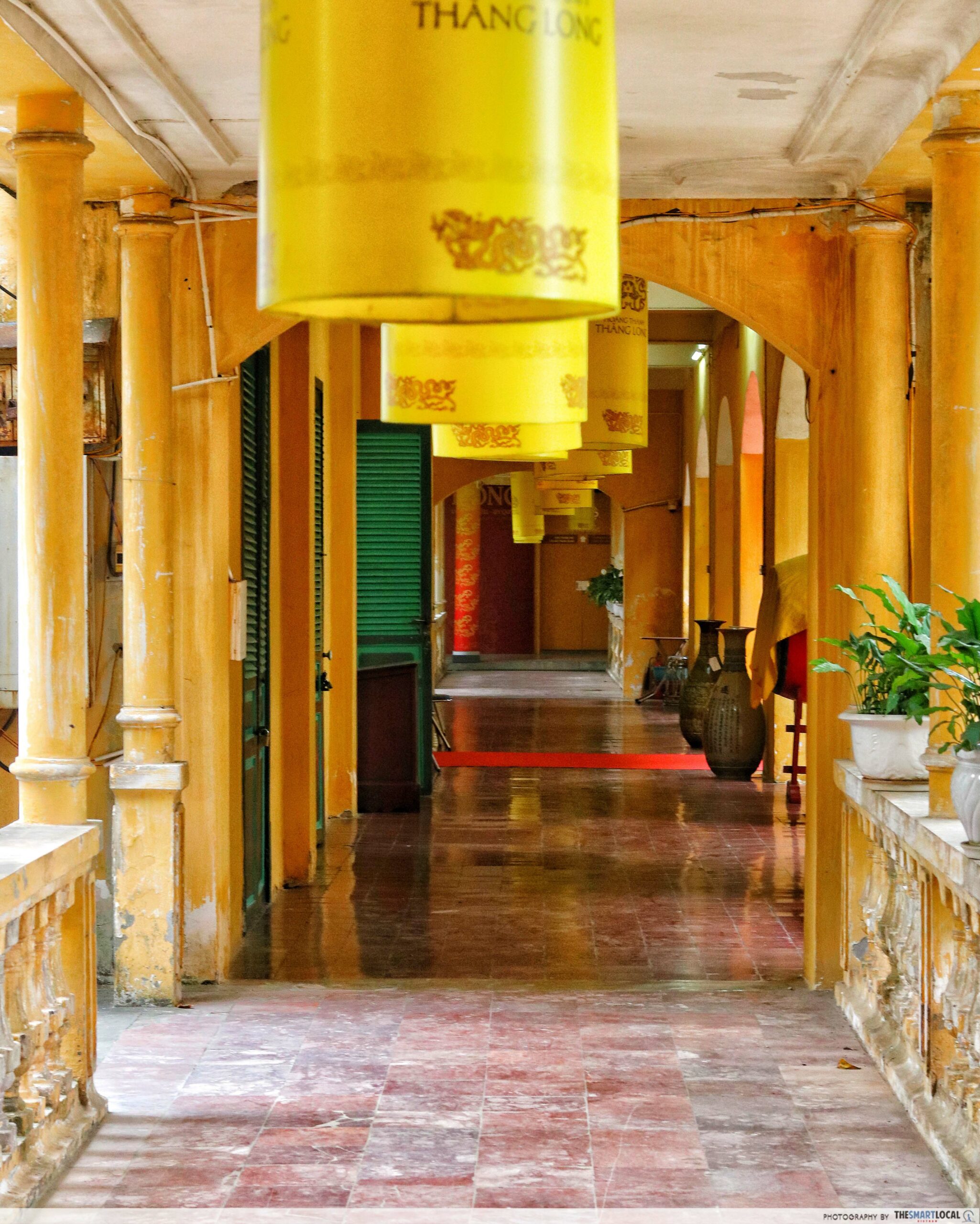
This place was reserved for ceremonial purposes as well as day-to-day state affairs.
Although Kính Thiên Hall held the most significant role in the history of Thăng Long Imperial Citadel, unfortunately, there’s no longer much to see here.
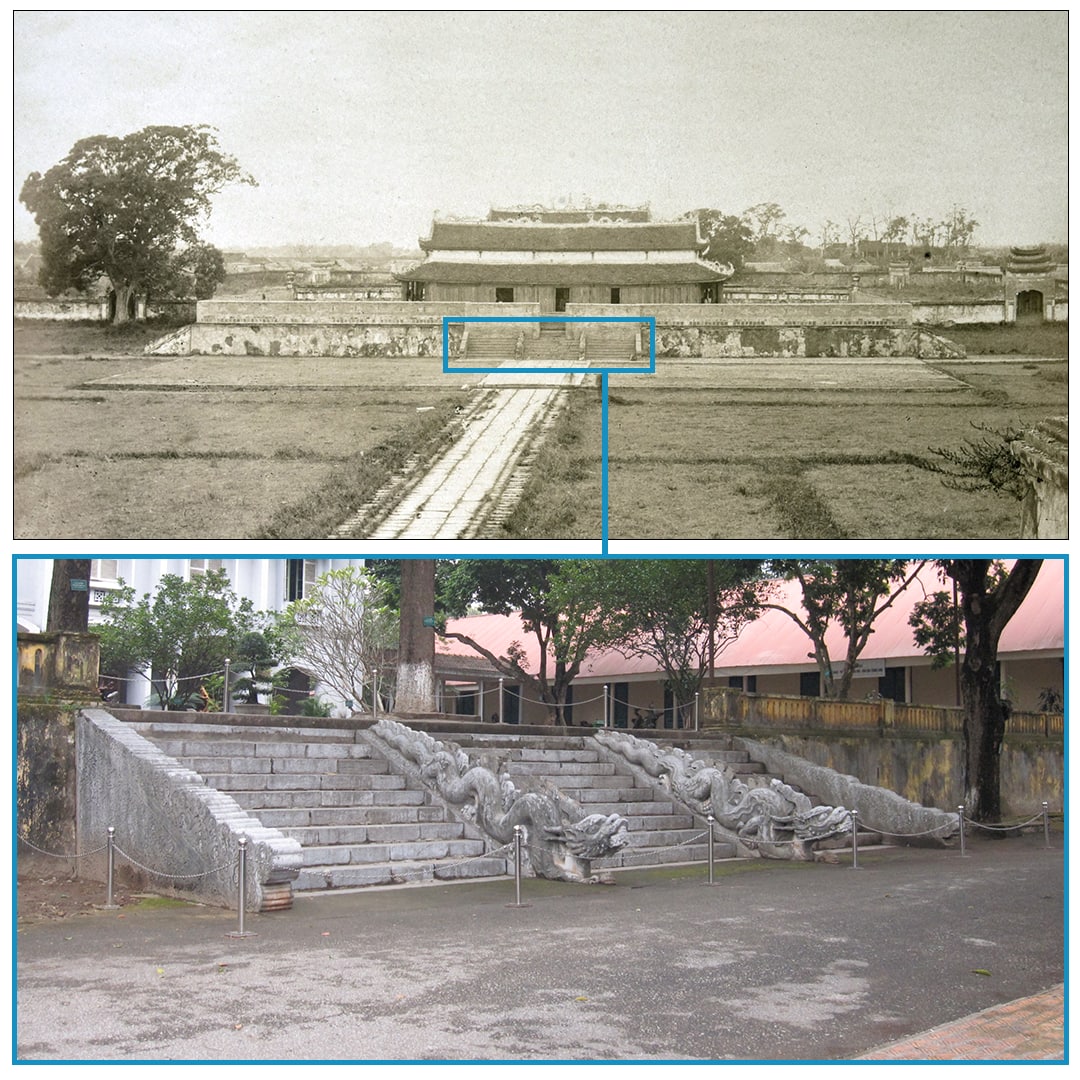
Image adapted from Gryffindor/Wikimedia Commons and manhhai
In 1886, a large part of the entire hall was destroyed by French colonists to make room for a military fortress. All that is left here today are the stairs leading to the hall and its foundation.

At the site, you’ll spot two stone dragons flanking the stairs.
These dragons were sculpted in 1467 during the Lê Dynasty and made of solid stone. Each features five claws, symbolizing the Emperor’s supreme authority.
Hậu Lâu Palace – the residence of the royal court ladies
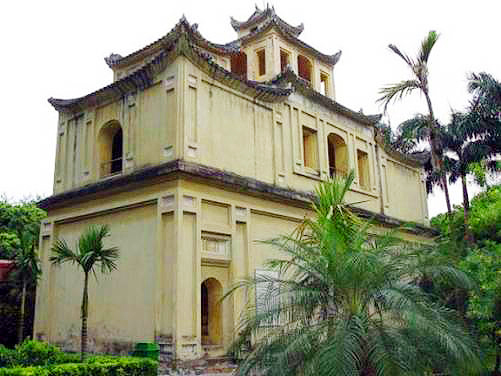
Image credit: Hoàng Thành Thăng Long
Situated behind Kính Thiên Hall to the north is Hậu Lâu, or the Court Ladies’ Residences, constructed during the Lê Dynasty (1428–1789).
This place was also called Tĩnh Bắc Lâu, or Serene North Palace, with a view to bringing peace to the north side of the citadel.
Built during the Lê Dynasty, Hậu Lâu covers an area of approximately 2,392 square meters and used to house the court ladies and princesses.

During the Nguyễn Dynasty, it was used as a holiday home for concubines escorting the emperors to the North.
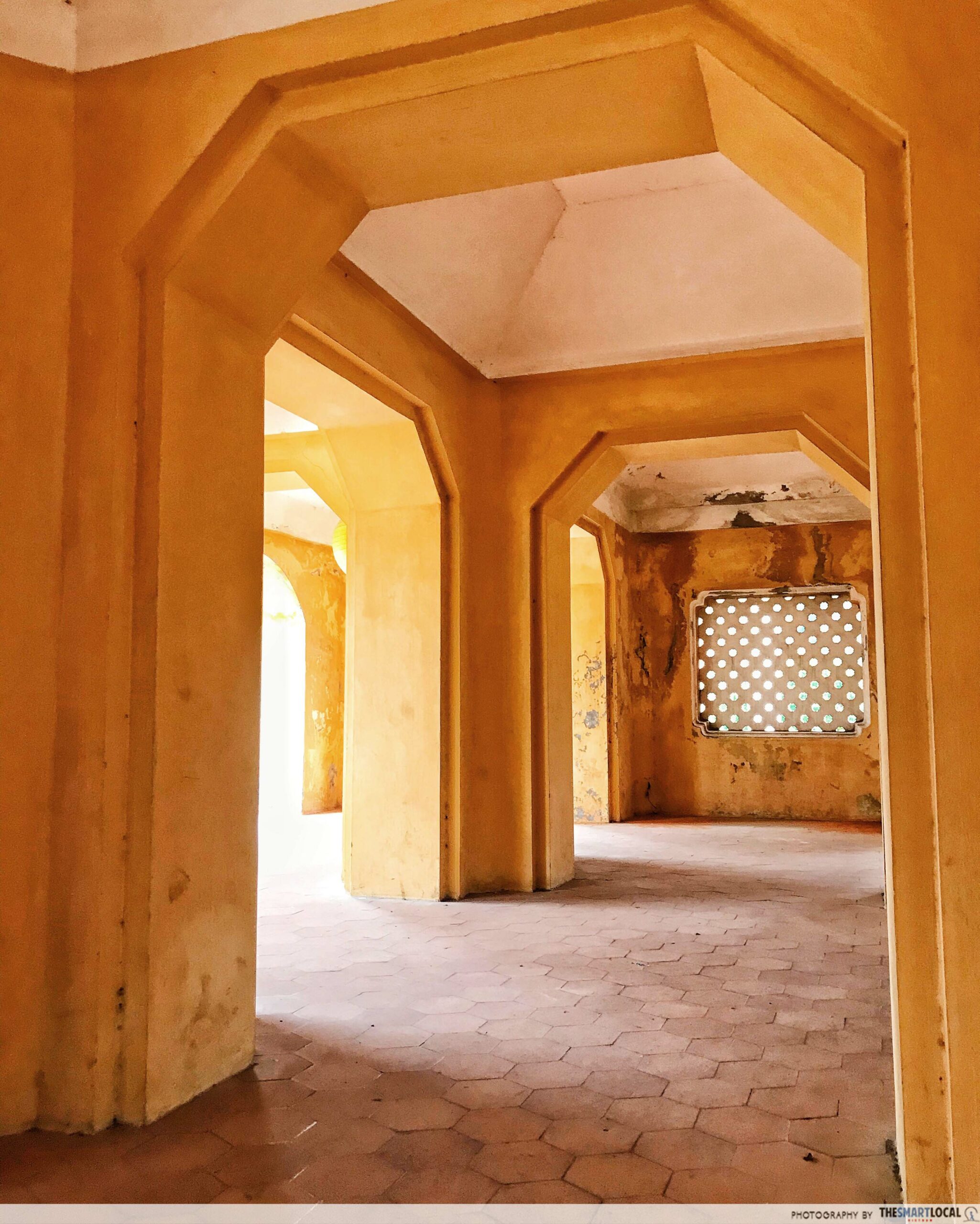
In the 19th century, the palace underwent major damage and was renovated by the French into French-style architecture.
D67 House – the politburo of the People’s Army of Vietnam during the Vietnam War

Situated to the north of Kính Thiên Hall is D67 House, the politburo of the People’s Army of Vietnam between 1954 and 1975.

The work desk of General Võ Nguyên Giáp
In this house, you’ll find the meeting room of the Vietnamese high-ranking military officials during the Vietnam War as well as General Commander Vo Nguyen Giap’s workplace. Below the house is a tunnel for emergency evacuation in the event of attacks.

Largely cordoned off and well-preserved, the house offers a glimpse into the working conditions of Vietnamese military patriots during the Vietnam War.

The Flag Tower Of Hanoi – a part of the UNESCO World Heritage Site

Image credit: Chinasaur/Wikimedia Commons
From the peak of the 33.4-meter-tall Hanoi Flag Post, part of the citadel area designated as a UNESCO World Heritage Site, you can get a widespread view of Hanoi’s inner city.
Built in 1805 and completed in 1812 during the reign of Emperor Gia Long, the tower boasts three tiers and an observatory deck. This is one of the very few imperial structures in Hanoi that were not destroyed during the French invasion in the 19th century.

Image credit: @purple_angel79
From the podium tier, visitors can ascend the observatory deck through a spiral staircase.
The third tier of the tower has four doors, three of which have names.
Situated on the east side where the sun rises, the east door here is aptly called “Nghênh Húc”, meaning “Welcoming The Dawn”.

Image credit: @sonha1509
Located on the side where the sun goes down, the western door is named “Hồi Quang”, or “Returning The Light”.
On the southern door, visitors can see the words “Hướng Minh”, meaning “Facing The Light”.
The Flag Tower Of Hanoi is now situated inside the Vietnam Military History Museum.
18 Hoàng Diệu Excavation Site – ruins and relics from the 8th century

Image credit:Wikipedia
Situated in the northern part of Thăng Long Imperial Citadel is 18 Hoàng Diệu Excavation Site.

A flower vase that traces back to the 8th century
Image credit:Hoàng Thành Thăng Long
At the site, you can find a myriad of artifacts from the Lý, Trần, and Lê dynasties, and the relics of Đại La, a fortified city inside Hanoi during the Tang Dynasty’s domination in the 8th and 9th centuries.

A well during the Trần dynasty
Image credit: Nguoi Ke Su
On the 2nd floor, visitors will see the foundations of the palaces, pillars, wells, and flooring tiles.
The Northern Gate – where governors Nguyen Tri Phuong and Hoang Dieu took their own lives

Image credit: @anhhk01
Built in 1805 in a gazebo structure, the 8.71-meter-high and 17.8-meter-wide Northern Gate consists of a ground deck and an upper deck.
Back in the day, the upper deck was used as an observation deck, where royal guards had a panoramic view over the citadel and the advancements of their enemies.
Because of its vantage point, the gate was seized by the French army and later used as the observation deck for the French during the occupation.
During an attack in 1882, the French troops fired cannons at the gate from the Red River. The damages left on the walls are still visible today.
Today, the upper deck is used as a shrine to honor Nguyễn Tri Phương and Hoàng Diệu, two governors of the Nguyễn Dynasty. During the French attacks in 1837 and 1882, these governors took their own lives after failing to defend the citadel.
Museums – a treasure trove of historical relics and art pieces

As you walk past the Đoan Môn Gate, you’ll be treated to a sight of many colonial houses built in the French style.

After the Vietnam War, these houses were used as museums to store artifacts from the nearby excavation site, art, and paintings.
A great selection of ceramics, sculptures, and decorative elements that date back to the Đinh, Lý, Trần, and Lê dynasties are exhibited in these museums.
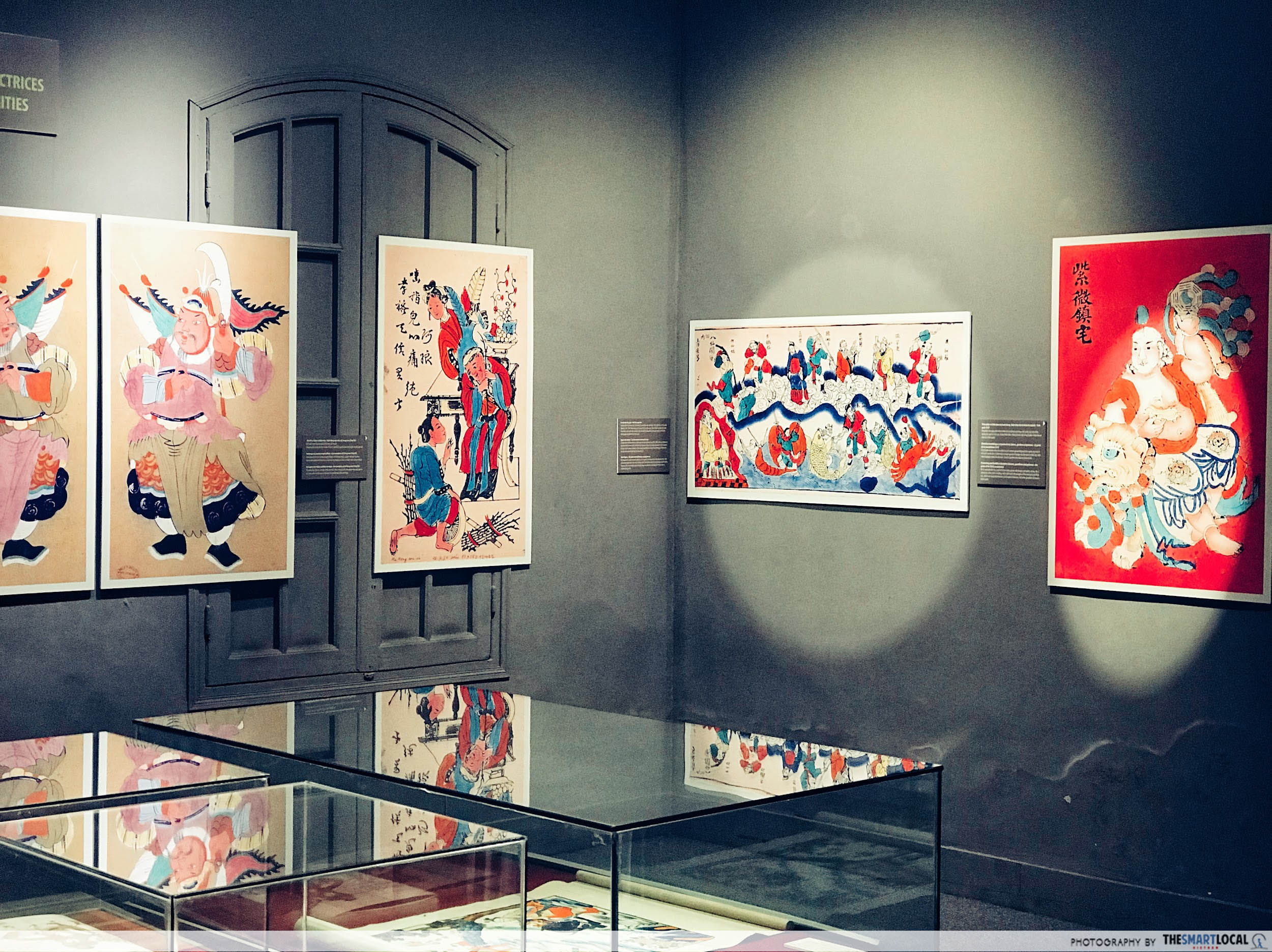
Guide to Thăng Long Imperial Citadel
Thăng Long Imperial Citadel is home to some of the oldest collections of Vietnamese historical artifacts.
Home to some of the oldest collection of Vietnamese historical artifacts, Thăng Long Imperial Citadel is one of the best museums in Vietnam. While touring the site, visitors can find a spectacular mix of ancient treasures and exhibitions of great significance in Vietnam’s history and culture.
Address: 19C Hoàng Diệu, Ba Đình, Hanoi
Admission fees: VND30,000 (~USD1.30)
Opening hours: Tue – Sun, 8AM-11.30AM and 2PM-5PM | Closed Mondays
Website
Also check out:
- Guide to Dalat: Vietnam’s most popular holiday town
- 20 natural attractions across Vietnam for a thrilling getaway
- Guide to Saigon’s Japan Town: from omakase dining to onsen bath
- 8 furniture stores in Saigon for multifunctional fittings
- Southeast Asia’s largest MUJI store in District 1
Cover image adapted from: Ba Đình
Enjoying The Smart Local Vietnam? Follow us on Facebook, Instagram, and LinkedIn for more stories like this.
